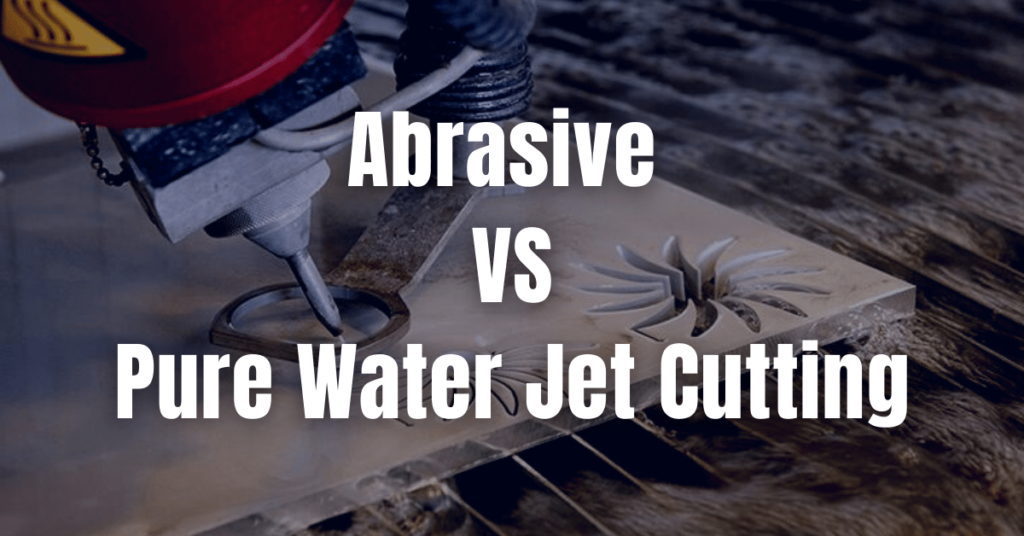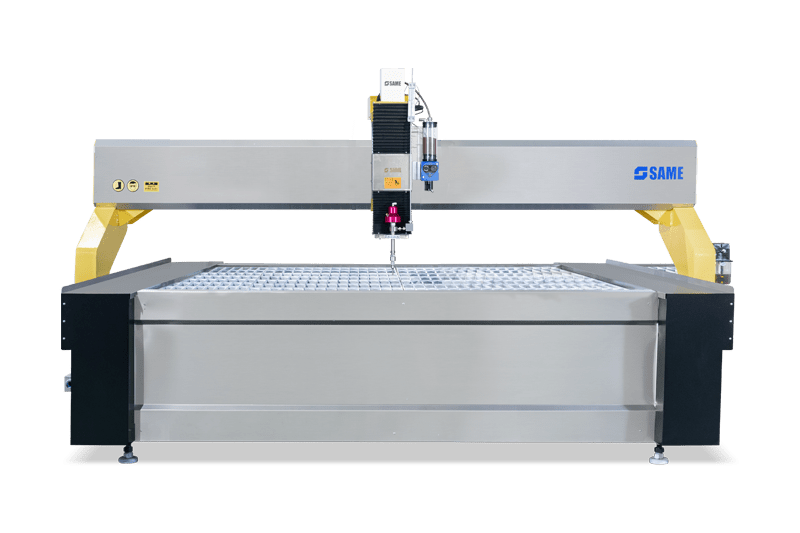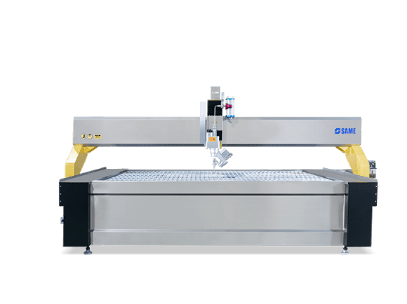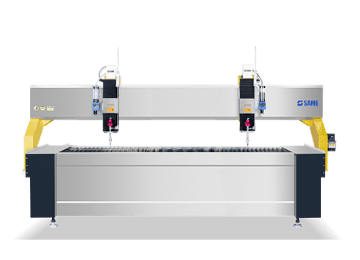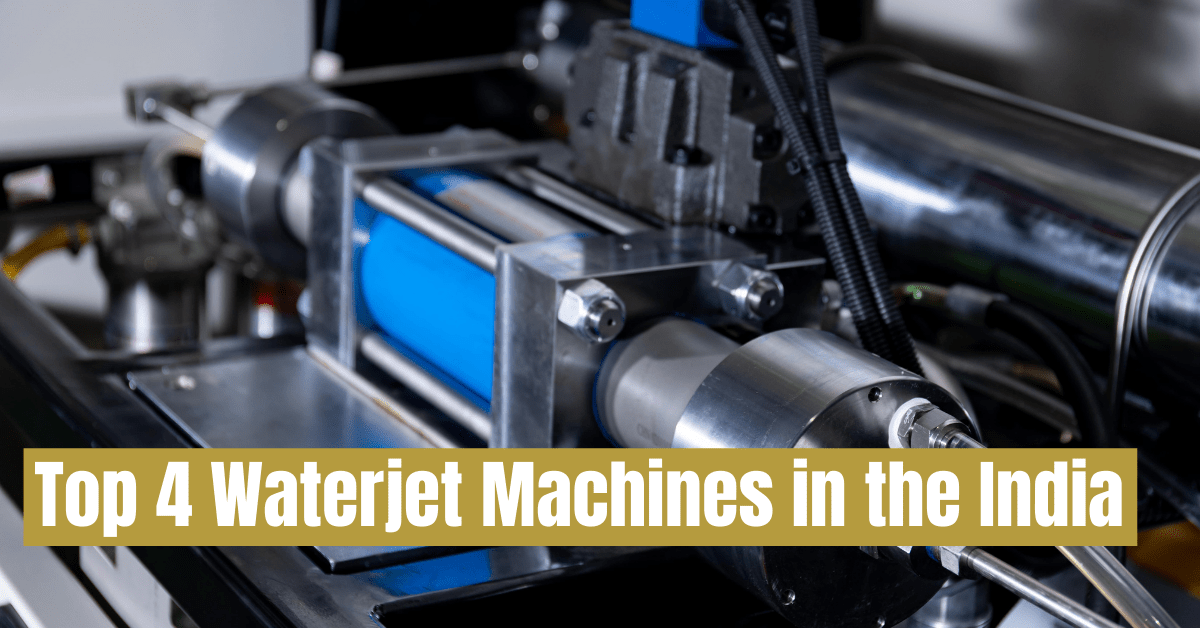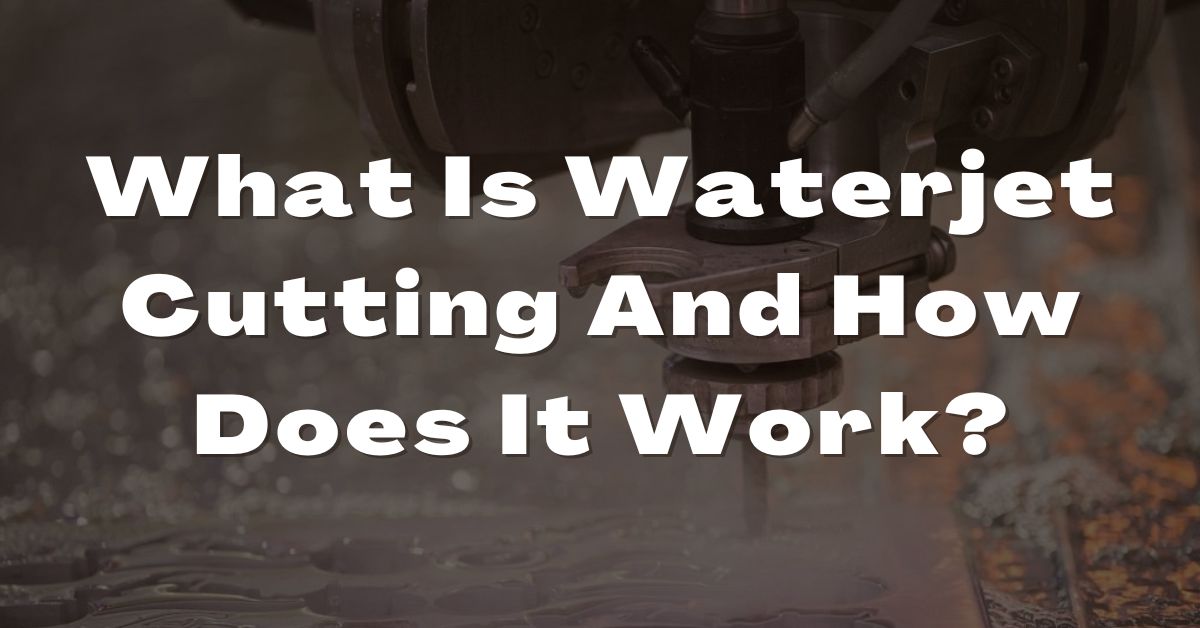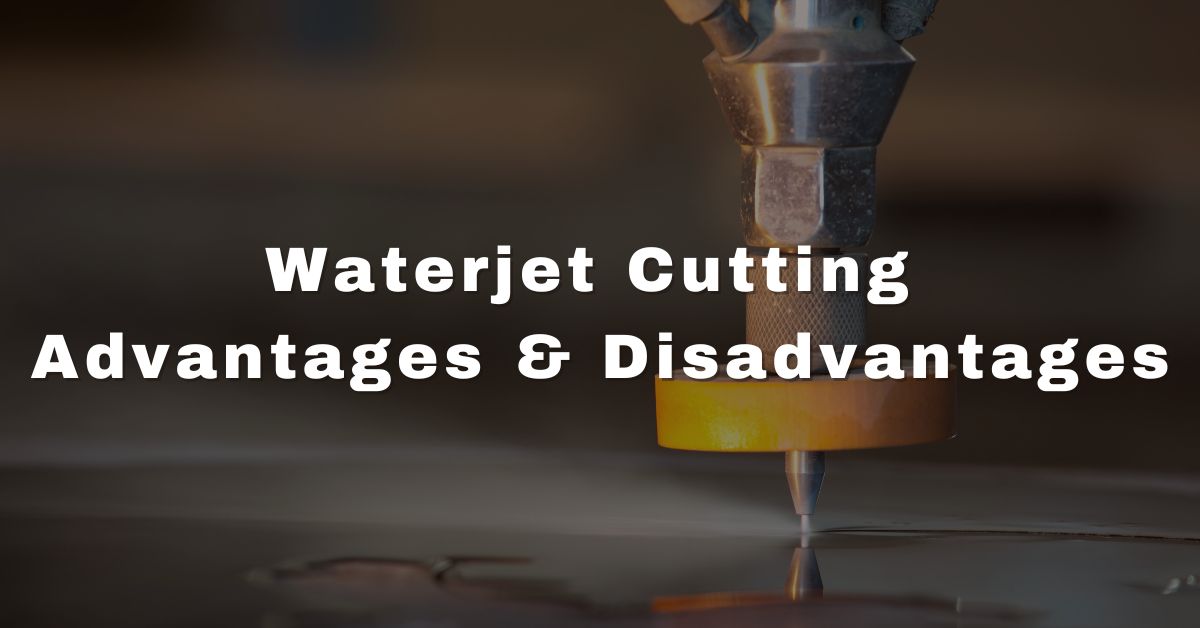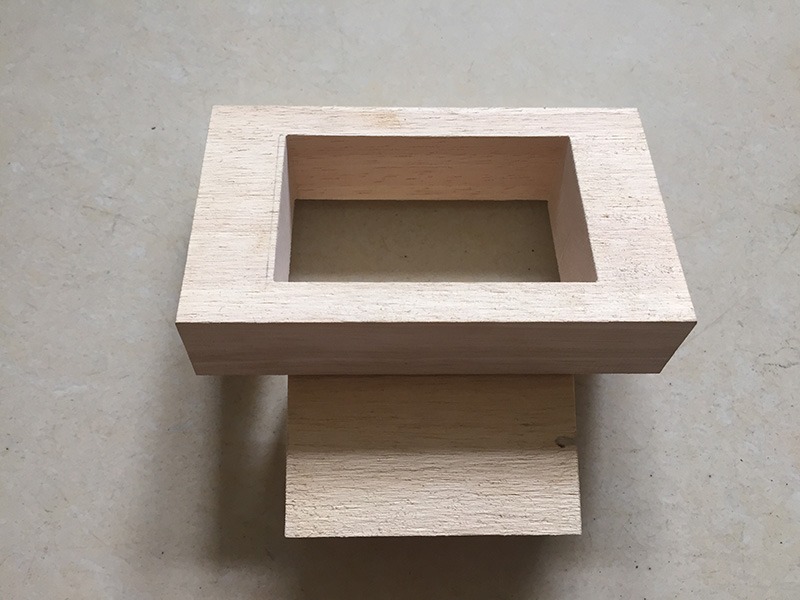A water jet cutter, known simply as water jet, is an industrial cutting tool. This cutter is able to cut through a broad variety of materials using extremely high-pressure water jet, which may or may not be mixed with an abrasive substance.
Cutting with purely water jet streams is referred to as ‘Pure water jet cutting’, while, cutting with a mixture of water and an abrasive substance is referred to as ‘Abrasive water jet cutting’.
Water jet cutting is a crucial process in automobile or machine industries for the fabrication and manufacture of machine parts, as well as in food production. This method most preferred to others, especially at instances when you work with materials that are highly sensitive the high temperatures caused by the cutting process. Some examples of such high temperature sensitive materials include aluminum and plastic.
In this era, Water jet cutting is the fastest-growing processes and cuts across industries, including aerospace, manufacturing, fabrication, mining and others due to its versatility and easy.
What is Abrasive Water Jet?
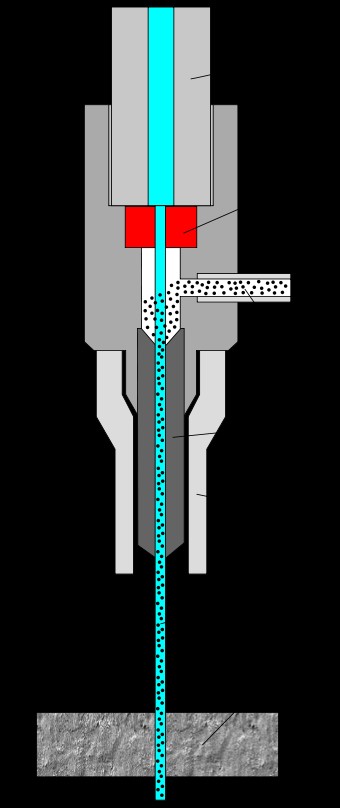
Abrasive water jet cutting is specific to industrial process, where you’ll need to cut hard materials like glass, metal and stone using high pressure an abrasive-water mix jet stream. The Abrasive substances mixed with the water help to stepup the speed of the water and thus, increase cutting power of water jet stream. This gives it the capacity to cut through solid materials.
Must Read: Cutting Glass with Abrasive Waterjet
Manufacturers discovered the abrasive water jet cutting method in the 1980s, founding that adding abrasives to the water stream was a good way to improve it’s cutting capacity, and this birthed a new list of water jet applications. The abrasive water jets followed the same operating principles as the pure water jets, however, it’s process differs due to the introduce of abrasive particles like garnet. Garnet mixed with the a high pressure water stream, is able to erode virtually any material in it’s path with precision and speed.
(A diagram above is that of an abrasive water jet cutter. Feature 1: the high-pressure water inlet. 2: the jewel (ruby or diamond). 3: the abrasive (garnet). 4: the mixing tube. 5: the guard. 6: the cutting water jet. 7: workpiece)
Recent advantages and challenges of abrasive water jet
Some advantages of Abrasive Water jet Cutting include;
- It is green technology:
- cutting process does not leave behind any hazardous waste.
- it allows for recycling of scrap metal.
- The close loop system allows process use very little water.
- Can cuts almost any material:
- Compared to the pure water jet and other cutters, it’s capable of handling just about any material.
- Materials may range from bullet-proof glass to stones, metals or materials having an even reflective or uneven surfaces.
- Generates Little or no Heat:
- The cutting process generates very little heat, and so the sensitive materials remain intact and u compromised.
- Extremely High Accurate:
- The cutter is capable of making high precision cuts or carve out 3-D shapes.
- It is very useful in drilling holes or intricate shape.
- Its able to work on cavities that are inaccessible via other methods.
- Leaves behind minimal damage.
Some challenges faced during abrasive Water jet Cutting:
- Long Cutting Time
- Though the abrasive water jet cutter is capable of cutting most materials, it takes a very long time to do so, thus constraining the output.
- Mechanical Failure:
- The nozzles are fragile and have a short life-spane.
- Mechanical Failure due to Low quality water jet orifices and other parts, cause production halt.
- Can cause lose to time and productivity .
- The thicker material, the less accurate the cutter:
- With thick materials, the consistency in the impact of water jet reduces with it’s distance from the nozzel, causing a decrease in the accuracy of cut.
- High initial Costs
- The cutting process may be revolutionary, but it takes a lot of capacity to start up.
- The abrasive material is very expensive and it cannot be reused.
- The abrasive water jet cutting process is not suited for working with soft material as the abrasive may get stuck to the work piece.
What is Pure Water Jet Cutting?
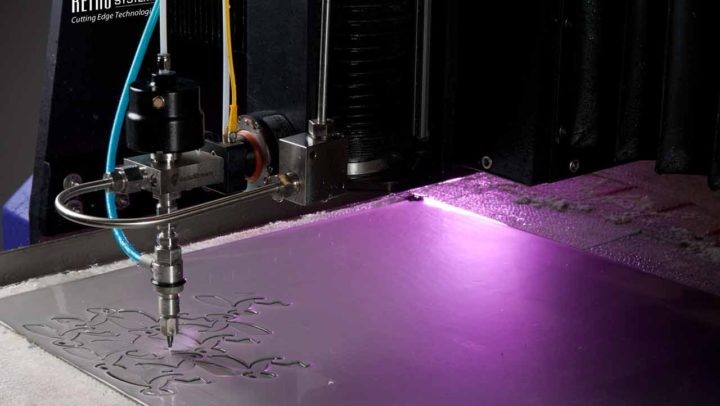
Pure water jet cutting is a water only cutting process. This does not require the addition of abrasive but rather uses a pure water jet stream to cut. This cutting method often used to cut softer materials like wood, rubber and more.
Recommended: Can Waterjets Cut Wood?
For cutting processes that do not need as much power or are contaminant sensitive, pure water jet is the way to go.
Recent advantages and challenges of water jet cutting
Some Advantages pure water jet machining include;
- Very little or no heat generation is generated during the cutting process.
- The surface finish of your workpiece is determined by the size abrasive material used for the process.
- High Accurate:
- The cutter is capable of making high precision cuts or carve out 3-D shapes.
- It is very useful in drilling holes or intricate shape.
- Its able to work on cavities that are inaccessible via other methods.
- Leaves behind minimal damage.
- It is very easy to operate, requires Little capital and watrejet cutting cost is also low.
- Perfect for light materials.
- Minimal damage to work piece.
- Perfect for food processing and other hygiene relevant processes.
Some Challenges faced while using the pure water jet include:
- Low cutting rate.
- Not suitable for thick materials.
- It uses green technology:
- cutting process does not leave behind any hazardous waste.
- it allows for recycling of scrap metal.
- The close loop system allows process use very little water.
- The process leads to environmental pollution.
Abrasive VS Pure Water Jet Cutting – What’s the Difference?
The main difference between the cutting processes is primarily their content of their streams and work material. The pure water jet cutter is able to deal with light and hygiene sensitive materials ,where as, the abrasive cutting process uses mixture of water and an abrasive substance to cut. This mixture gives the process a boost to tackle harder and thicker materials.
It is very important that we understand what’s the difference between the both abrasive and pure water jet options. This is so you make the best and appropriate decision when choosing the correct tool for your project.
Abrasive Water Jet Cutting is Suitable For?
The Abrasive water jets cutting process is most suitably used to cut materials, such as;
- Steel
- Stone
- Ceramic
- Thick Plastics
- Aluminum
Pure Water Jet Cutting Is suitable For…
Because water is the only substance used in pure water jet, it’s deemed most suitable for working on delicate materials. Since just water is the only substance used in the process, the finished component remains intact and undamaged. Pure water jets is suitable for cutting:
- Food products (like cake, chicken, or fruit)
- Fabric
- Rubber
- Thin Plastic
- Foam
Which Is Right For You?
One thing you must note is that both processes follow the same principle. The pure and abrasive water jets also share the same advantages; including high and accurate cutting speeds, low heat generation, environmental friendly tech, and more. In order to determining which method is right for your projects, you must consider which method serves your purpose best.
- Operation cost: abrasive jets are more costly to operate and maintain.
- If you working with thick rubber materials, go with the abrasive water jet.
- For the process of fabrication and manufacturing using materials like steel, aluminum and more, the abrasive water jet cutter is the best option.
- If your company works with thin or soft materials, then the pure water jets is the best and most economical choice to make.
- If you work with hygiene sensitive materials and desire to meet up with USDA standards for hygienic cutting, the pure water jet is the way to go
- if you need to cut food materials keep up with technical advancement in it’s purest form, the pure water jet is the choice to make.
When is it Appropriate to Use Abrasive VS Pure Water Jet Cutting?
Abrasive water jet cutting process is most appropriate when working on thick and hard materials, especially for manufacturing and fabrication of mechanical parts as well as 3D products.
And the water jet cutting process is most appropriate when working on hygiene sensitive and food products, light and soft materials, fabric and much more. Basically, what ever you scissors can cut, the pure water jet can do excellently.
Also Read: What Materials Can a Waterjet Cut?


